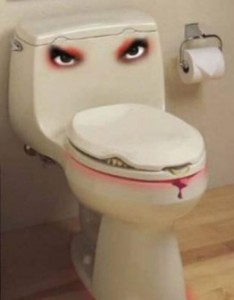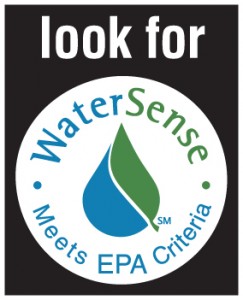As we’ve entered into wastewater averaging season (November – February), we are all trying to use the least amount of water possible so that our wastewater averages and charges will be lower this next year. So, let’s talk toilets as a easy way to reduce the consumption of water inside your home. It involves no behavior changes, you don’t have to think about it, it just saves water each time it’s used! First though, maybe I should explain wastewater averaging quickly, to make sure we’re all on the same page.
It involves no behavior changes, you don’t have to think about it, it just saves water each time it’s used! First though, maybe I should explain wastewater averaging quickly, to make sure we’re all on the same page.
Wastewater averaging happens every winter. It’s the way the City calculates what you’ll be charged on your utility bill for wastewater (or sewer, same thing). The City doesn’t have meters on the wastewater lines coming from your property, so we don’t know exactly how much waste is leaving and we’re treating. We make assumptions based on your water use. During the winter months (November – February), it is assumed that all water used at your property is being used indoors (and goind down the drain–think sinks, toilets, baths, washers, showers). It’s winter, the plants go dormant and we’ve had so much rain, no additional irrigation is needed. Evaporation to pools is minimal. So, this winter water use is the lowest amount of water used all year. Those winter months of water use are averaged and that average is what you’re charged for wastewater the remainder of the year. And yes, wastewater does cost more than water. It just takes more time, chemicals, and other treatments to clean it, so the charges are slightly higher for it.
You have a direct impact on your wastewater charges by using less water during the winter months. First, turn off your irrigation system. Easy, done. The next major impact–and my topic today–toilets. Everyone uses one everyday. They account for the largest use of water indoors, using up to 30% of our indoor water use. The less water you flush, the lower your water use will be, and that directly impacts wastewater charges. We’ve come full-circle now!
Now, the City has had a toilet rebate program, on and off, since 2009. To be eligible for the rebate there are three criteria:
- You must be a direct City of Round Rock water customer. This is because the water conservation program is funded directly by a portion our customer’s water charges; MUDs and others not on City water do not contribute to the program and aren’t eligible.
- Your house or property must have been built before January 1996. I get asked about that date and here’s why it’s there: In 1991 the EPA determined that all toilets manufactured and sold in the U.S. must use 1.6 gallons of water per flush (gpf) or less. At that time, all the manufacturers did was fill up the tanks with less water, but kept all the plumbing parts the same. The toilets were terrible and most had to be double-flushed, which is why the bad reputation is still made fun of today in sitcoms. Water usage was actually increasing, rather than decreasing and the manufacturers knew they had to make other changes to the design of the toilets. So, fast-forward a few years to 1995 and efficient toilets were redisgned and now actually flushing the way they were supposed to. The date is there since all toilets manufactured since then were good, working 1.6 gpf toilets.
- The toilet(s) purchased must be WaterSense approved. WaterSense is an EPA program that is basically like Energy Star, but for water use. Items labeled with WaterSense label have been third-party tested for performance and lasting efficiency. When purchasing a product that has the WaterSense logo, you know the product is good and will retain it’s water savings for it’s life expectancy. The list is continually updated as more products get tested.
So, if you haven’t already paricipated in the rebate program, or replaced your pre-1996 toilets, it’s time to do it!! The rebate program is ending permanently on December 31, 2013, so there is only a month left to take advantage of the rebate! Why is it ending, you ask? Well, starting January 1, 2014, all toilets sold in Texas must be 1.28 gpf or less, by law. The City isn’t keen on providing a rebate on an appliance that is efficient, when that’s the only choice available. We’d rather start using the funds for another program.


